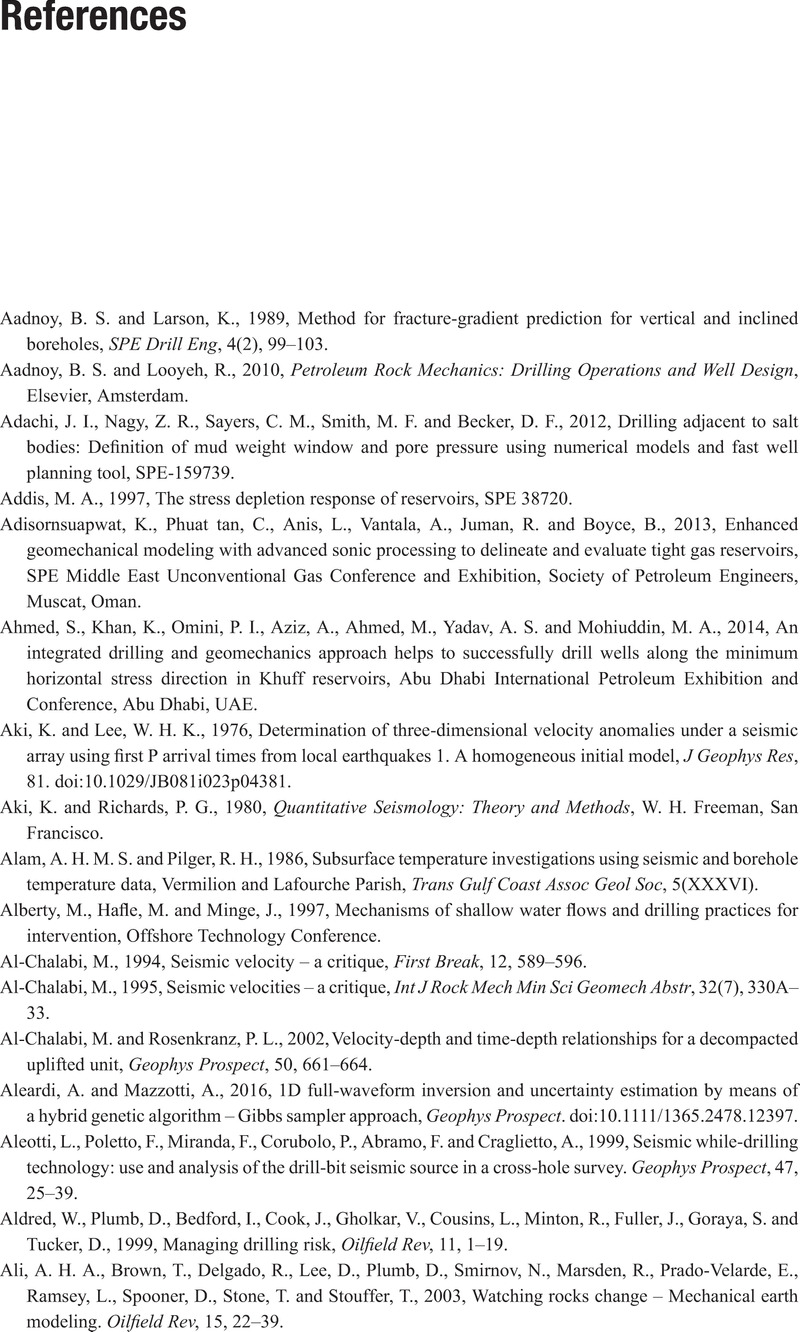Book contents
- Quantitative Analysis of Geopressure for Geoscientists and Engineers
- Quantitative Analysis of Geopressure for Geoscientists and Engineers
- Copyright page
- Contents
- Preface
- 1 Basic Pressure Concepts and Definitions
- 2 Basic Continuum Mechanics and Its Relevance to Geopressure
- 3 Mechanisms of Geopressure
- 4 Quantitative Geopressure Analysis Methods
- 5 Seismic Methods to Predict and Detect Geopressure
- 6 Integrating Seismic Imaging, Rock Physics, and Geopressure
- 7 Methods for Pore Pressure Detection
- 8 Gravity and EM Field Methods Aiding Pore Pressure Prediction
- 9 Geopressure Detection and Prediction in Real Time
- 10 Geopressure Prediction Using Basin History Modeling
- 11 Geohazard Prediction and Detection
- 12 Petroleum Geomechanics and the Role of Geopressure
- 13 Guidelines for Best Practices
- 14 Recent Advances in Geopressure Prediction and Detection Technology and the Road Ahead
- Book part
- References
- Index
- References
References
Published online by Cambridge University Press: 10 February 2021
- Quantitative Analysis of Geopressure for Geoscientists and Engineers
- Quantitative Analysis of Geopressure for Geoscientists and Engineers
- Copyright page
- Contents
- Preface
- 1 Basic Pressure Concepts and Definitions
- 2 Basic Continuum Mechanics and Its Relevance to Geopressure
- 3 Mechanisms of Geopressure
- 4 Quantitative Geopressure Analysis Methods
- 5 Seismic Methods to Predict and Detect Geopressure
- 6 Integrating Seismic Imaging, Rock Physics, and Geopressure
- 7 Methods for Pore Pressure Detection
- 8 Gravity and EM Field Methods Aiding Pore Pressure Prediction
- 9 Geopressure Detection and Prediction in Real Time
- 10 Geopressure Prediction Using Basin History Modeling
- 11 Geohazard Prediction and Detection
- 12 Petroleum Geomechanics and the Role of Geopressure
- 13 Guidelines for Best Practices
- 14 Recent Advances in Geopressure Prediction and Detection Technology and the Road Ahead
- Book part
- References
- Index
- References
Summary

- Type
- Chapter
- Information
- Publisher: Cambridge University PressPrint publication year: 2021

